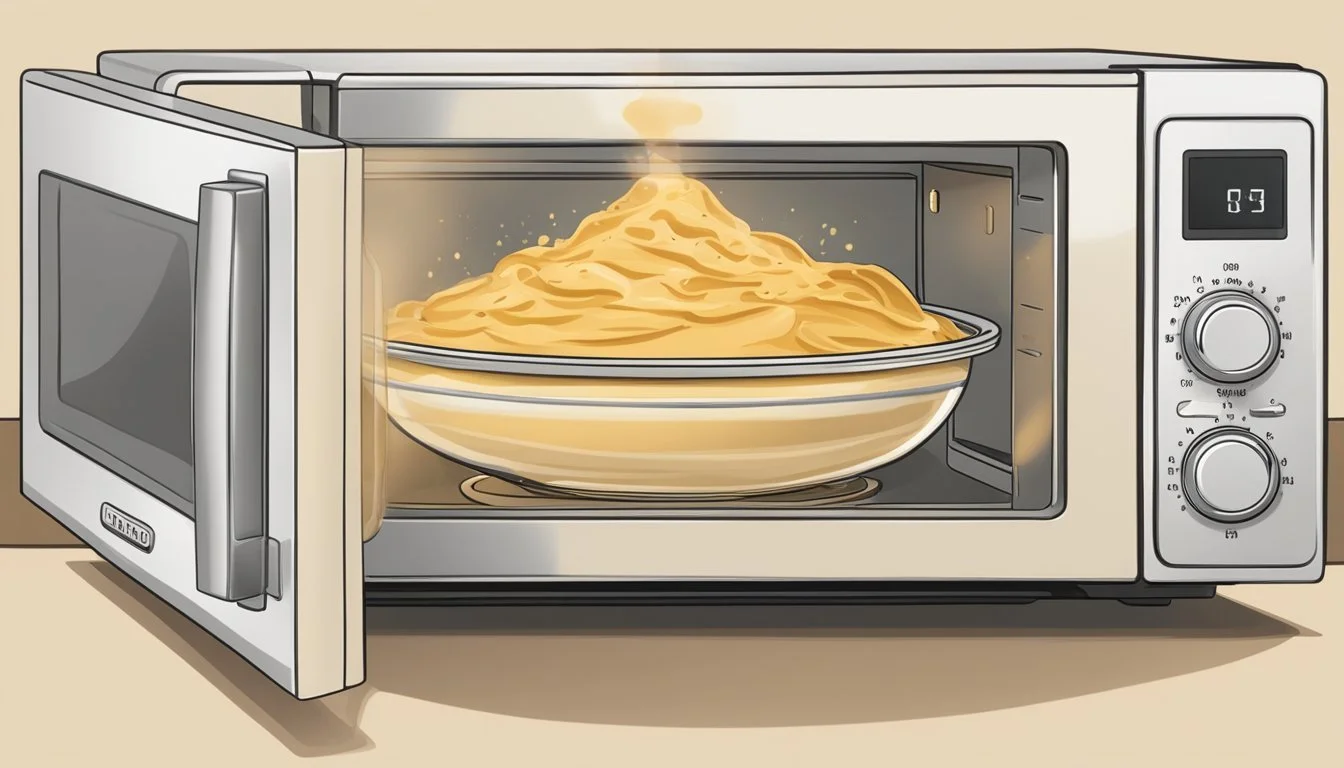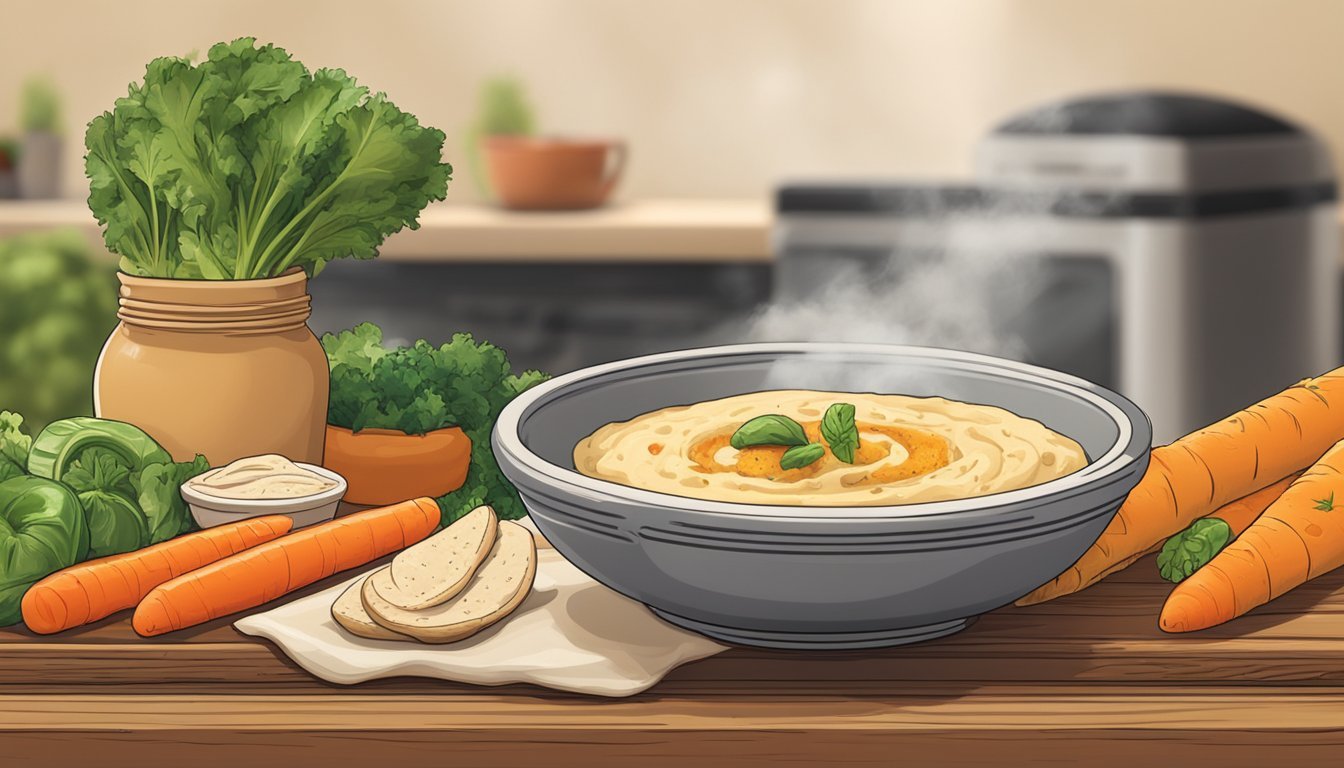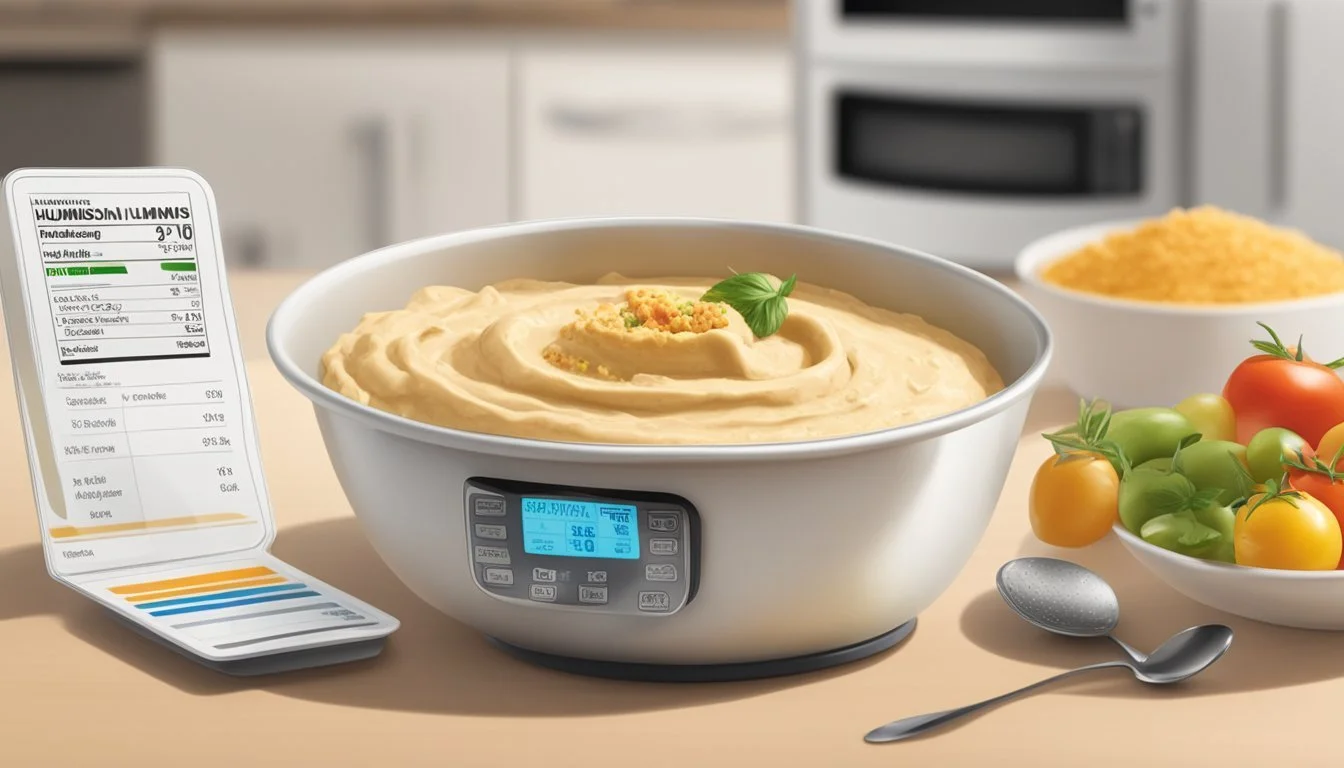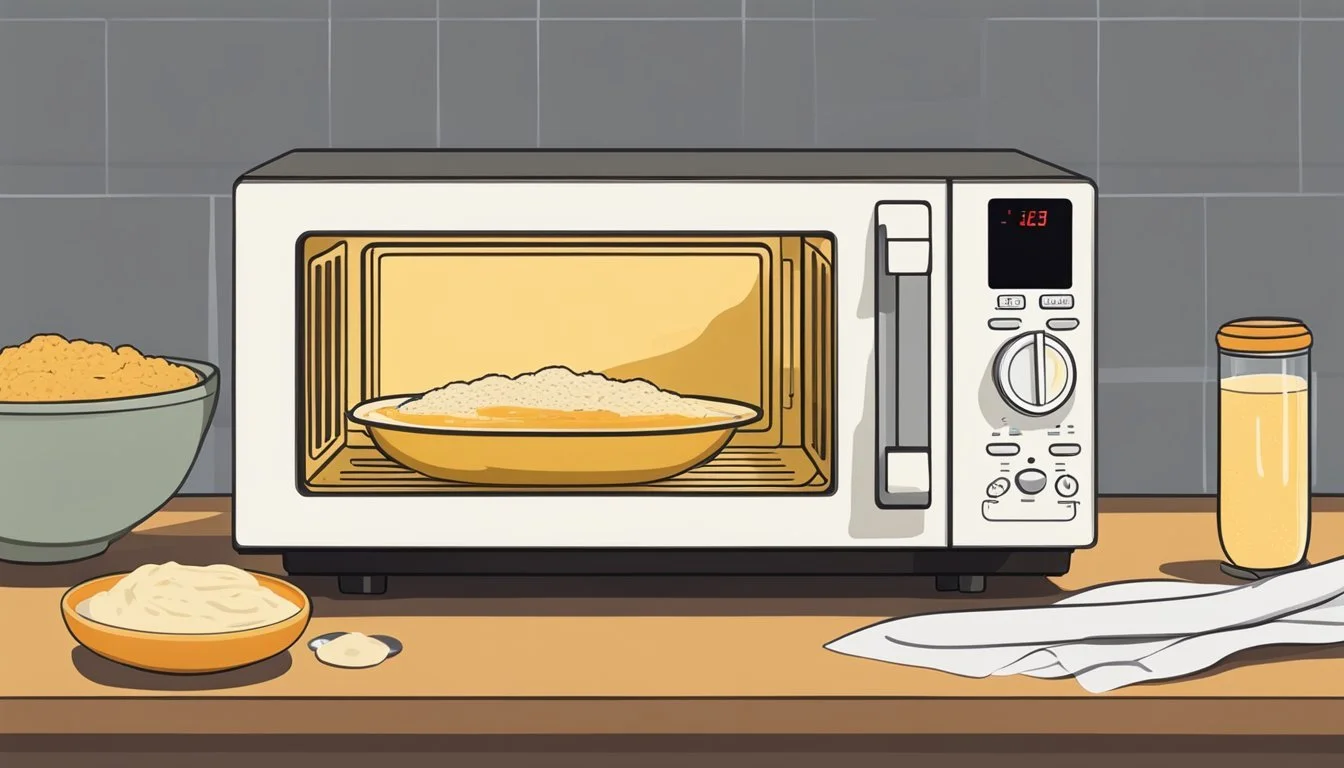Best Way to Reheat Hummus While Maintaining Creaminess
When it comes to hummus, one of the key elements of its appeal is its creamy consistency. The smooth texture is central to the enjoyment of this popular Middle Eastern dip, made primarily from chickpeas, tahini, lemon juice, and seasonings. Preserving the creaminess of hummus during reheating is essential, especially when it's enjoyed as a warm spread or incorporated into hot dishes. The best methods retain not only the temperature but also the original quality of the freshly made dish.
Several techniques can be employed to reheat hummus while keeping its creamy texture intact. Traditional approaches often involve gentle heating to avoid the separation of ingredients that can lead to a grainy or oily consistency. Microwaving, steaming over a water bath, or gently warming hummus in a conventional oven are common methods. Each method requires careful attention to detail, whether it's incorporating a small amount of water to the hummus before heating or ensuring that the hummus is heated evenly and not scorched.
It is vital to understand the characteristics of hummus in order to select an appropriate reheating method. By considering the unique composition of hummus, which includes both protein from the chickpeas and fat from the tahini, it becomes clear why aggressive reheating methods can damage its delicate balance. Consequently, the best approaches to reheating hummus are those based on a slow and controlled application of heat, ensuring the dip returns to a suitable serving temperature while maintaining its prized creamy consistency.
Understanding Hummus Composition
Hummus is a traditional Middle Eastern spread that primarily consists of chickpeas, also known as garbanzo beans. Its creamy texture is a result of blending these cooked legumes with tahini (a paste made from sesame seeds), olive oil, lemon juice, and garlic. These ingredients are not just the backbone of hummus for their flavor but also for their role in ensuring the correct consistency.
The texture of the hummus is a key determinant of its quality. It should be smooth and creamy, which is achieved by the starchiness of chickpeas and the richness of tahini. The addition of olive oil adds to the velvety mouthfeel, while lemon juice provides a slight tang and helps to balance the flavors. Garlic, used sparingly, gives hummus its distinctive taste without overpowering the other ingredients.
Understanding this composition is crucial when considering reheating methods, as preserving the delicate balance of flavors and textures is vital.
Ingredient Purpose Chickpeas Base, provides creaminess and starchiness Tahini Adds richness and a nutty flavor Olive Oil Contributes to smooth texture and flavor Lemon Juice Balances the flavors with a tangy note Garlic Offers a distinctive taste
Each component in hummus reacts differently to heat. For instance, applying too much heat can cause the tahini to become grainy, while a gentle warming can enhance its nutty flavor. It is therefore essential to reheat hummus in a way that respects and preserves its intrinsic qualities.
Pre-Reheating Preparation
Preparing hummus correctly before reheating ensures that it preserves its creamy texture and flavors. The two critical steps involved are portioning hummus for reheating and properly thawing if it's been frozen.
Portioning Hummus for Reheating
One should reheat only the amount of hummus intended for immediate consumption. Portioning hummus helps maintain its quality, as repeated reheating can negatively affect the taste and texture. Users should transfer the desired quantity into a separate container, leaving the rest untouched to maintain its freshness.
Key steps for portioning:
Measure out the amount of hummus needed.
Place the portion in a heat-proof dish.
Thawing Frozen Hummus
If hummus has been stored in the freezer, it must be thoroughly thawed before reheating. An efficient way to thaw frozen hummus is to transfer it from the freezer to the refrigerator and allow it to thaw gradually, typically overnight.
Thawing instructions:
Move the hummus from the freezer to the refrigerator at least several hours before reheating, preferably overnight.
Ensure the container is sealed to prevent any refrigerator odors from being absorbed.
By focusing on proper portioning and thawing, one can ensure their hummus remains delicious and retains the beloved creamy consistency during subsequent reheating.
Reheating Methods Overview
When it comes to reheating hummus while maintaining its creamy texture, one must choose the appropriate technique to avoid drying it out or altering its flavor. This section explores four different reheating methods tailored for hummus.
Microwave Technique
To use the microwave for reheating hummus, they should transfer the hummus into a microwave-safe dish, ideally with a tablespoon of water to keep it moist. They should cover the dish with a microwave-safe lid or plastic wrap, reheating on medium heat in 10-second intervals, stirring between each to preserve a smooth consistency.
Stovetop Method
The stovetop method involves adding hummus to a heat-proof bowl, which is then placed over a saucepan with a small amount of water at the bottom. They should ensure the bowl does not touch the water and cover it, allowing steam to reheat the hummus on low heat for about 5-7 minutes, which prevents the hummus from sticking or becoming unevenly warm.
Oven Method
For oven reheating, they need to preheat the oven to a low temperature setting and place the hummus in an oven-safe dish. If preferred, they can cover the dish with foil to trap moisture. They should bake the hummus for about 20-25 minutes, ensuring it's evenly warmed through without losing its creamy texture.
Hot Water Bath Approach
Finally, the hot water bath approach is a gentle method where they seal hummus in a freezer or zip-lock bag, squeezing out excess air. They should then rest the sealed bag in a bowl of hot water—not boiling—for 3-4 minutes or until the hummus reaches the desired temperature. This method ensures even heating and maintains the hummus' creamy quality.
Reheating Process Step-by-Step
To preserve the creamy consistency of hummus during reheating, one must manage temperature carefully, stir frequently for uniform consistency, and reintroduce moisture as needed.
Adjusting Temperatures
It's essential to heat hummus slowly and on low heat to prevent it from drying out or becoming grainy. Whether using a microwave or stovetop, setting the temperature to medium or lower allows for a gentle warm-up. A consistent, low heat ensures the hummus heats evenly without altering the texture unfavorably.
Microwave Method:
Set power to 50% (medium).
Heat in 10 to 15-second intervals.
Stovetop Method:
Use the lowest setting possible.
Heat steadily, monitoring constantly.
Stirring for Consistency
As hummus reheats, stirring is vital to maintain its signature creaminess. One should stir the hummus every few seconds in the microwave or continuously if using the stovetop. This prevents overheating in certain spots and promotes even distribution of temperature throughout the dip.
Microwave Method:
Stir every 10-15 seconds.
Stovetop Method:
Stir constantly with a wooden spoon or spatula.
Adding Moisture Back to Hummus
Hummus can lose moisture when reheated, so it's sometimes necessary to add a liquid back to the hummus to achieve the right consistency. A small amount of lemon juice or olive oil can be stirred into the hummus to restore its smooth texture and add some freshness to the flavor. Water can also be used if one prefers not to alter the taste.
Microwave Method:
1-2 teaspoons of lemon juice, olive oil, or water.
Stovetop Method:
1-2 teaspoons of preferred liquid, added gradually.
Avoiding Common Reheating Mistakes
When reheating hummus, one must carefully manage temperature, preserve the spread’s original flavors and textures, and maintain its health benefits. Attention to detail in these areas ensures that the hummus remains a delightful and safe complement to any meal.
Preventing Overheating
One should never expose hummus to direct high heat as it can result in a dried out and grainy texture. It is optimal to use gentle methods such as a hot water bath or steam, reheating it slowly and monitoring its warmth. Taking such precautions will help in avoiding an overheated, inedible hummus.
Hot water bath: Warm the hummus by placing it in a freezer or zip-lock bag, submerge in a hot water bowl for 3-4 minutes.
Steam: Use a steamer with a heat-proof bowl, steam the hummus for about 5-7 minutes with a lid on.
Maintaining Taste and Texture
Hummus is best enjoyed when its creamy consistency and rich taste are preserved. To achieve this, add a small amount of water or vegetable broth before reheating to prevent the hummus from drying out. Furthermore, gently stirring in any separated oils and incorporating fresh spices or garnishes after reheating can enhance the flavor.
Moisture: Add 1-2 teaspoons of water or broth.
Freshness: Stir in spices or add garnish post reheating.
Consistency: Stir consistently if using a microwave, reheating in 10-second intervals.
Addressing Health Concerns
To maintain the health benefits of hummus, carefully manage the reheating temperature to avoid the breakdown of nutrients or the formation of harmful compounds. Reheat hummus to an internal temperature of 165°F (74°C) to ensure food safety without compromising its healthy qualities. Always opt for reheating methods that require minimal additives or preservatives.
Temperature: Check with a food thermometer for an internal temperature of 165°F.
Additives: Avoid using artificial preservatives or excessive oil during reheating.
Enhancing Reheated Hummus
Successfully reheating hummus can restore its delectable creaminess, but to elevate the dip even further, consider incorporating flavor enhancements and using leftovers in innovative ways.
Flavor Enhancements
One can invigorate hummus with bold flavors after reheating by incorporating a variety of spices and condiments. Here's a table of suggestions:
Ingredient Method of Integration Result Tahini Drizzle extra on top after reheating Adds richness Cumin Sprinkle lightly and stir in Imparts a warm, earthy note Salt Adjust to taste, sprinkle sparingly Enhances overall flavor profile Black Pepper Freshly ground, stirred in Provides a sharp, spicy kick Garlic Stir in minced fresh garlic Delivers a robust, pungent flavor Paprika Dust on top for a smoky hint Adds color and smokiness Fresh Herbs Fold in chopped herbs such as parsley or cilantro Offers a fresh, aromatic finish Olive Oil Drizzle on top as a finishing touch Contributes to a smooth texture and fruity aroma
These additions should be added sparingly to avoid overwhelming the hummus' natural flavor.
Creative Uses for Leftovers
Leftover hummus doesn't only have to be a dip—it can also transform everyday dishes. Leftover hummus can serve as a tasty pasta sauce by thinning it with a bit of pasta water and tossing it with hot noodles, garnishing with a sprinkle of herbs or a drizzle of olive oil. Additionally, hummus can complement other Mediterranean-inspired dishes, providing a creamy base or an accompaniment to vegetables and proteins. One can fully utilize hummus in a plethora of culinary applications, allowing it to shine beyond its traditional role.
Storing and Preserving Hummus
Maintaining the creamy consistency of hummus is contingent upon proper storage and preservation techniques. These practices ensure the product remains fresh and enjoyable for as long as possible.
Proper Storage Techniques
The key to keeping hummus fresh in the short term is storing it in an airtight container. Whether store-bought or homemade, hummus should be transferred to a container that can be sealed tightly to prevent exposure to air, which can degrade its quality. If an airtight container is not available, one must resort to wrapping the surface of the hummus with plastic wrap, ensuring the plastic is in direct contact with the hummus to fend off air exposure.
Transfer: Scoop hummus into an airtight container.
Wrap: If necessary, use plastic wrap directly on the hummus before closing the container.
Maximizing Shelf Life
To maximize the shelf life of hummus beyond a few days, freezing is the most effective method. By dividing the hummus into smaller portions, one ensures only the needed amount is thawed, retaining more of the product's freshness upon subsequent uses. When freezing hummus, it's critical to label the storage bags or containers with the current date, as hummus stored in the freezer can last for up to six months.
Portion: Divide hummus into consumable sizes before freezing.
Label: Mark each bag or container with today's date.
Freezing in airtight conditions preserves the hummus's moisture and prevents freezer burn. For best results, allow the frozen hummus to thaw in the refrigerator overnight before reheating and serving.
FAQs on Hummus Reheating
When reheating hummus, preserving its creamy consistency is crucial. This section addresses frequent questions regarding the best methods to achieve a warm, smooth hummus without compromising quality.
Addressing Common Queries
Can hummus be reheated?
Yes, hummus can be reheated using several methods such as a microwave, stovetop, or a hot water bath. The key is to do so gently to prevent altering its texture and flavor.
What is the best way to reheat hummus in the microwave?
Reheat hummus in a microwave by following these steps:
Place hummus in a microwave-safe dish.
Add 1-2 teaspoons of water to maintain moisture.
Cover the dish with a lid or microwave-safe plastic wrap.
Heat on medium power in 10-second intervals, stirring in between, until warm.
How do I ensure the hummus stays creamy?
To preserve creaminess, stir hummus frequently while reheating, and consider adding a bit of water or olive oil to the hummus before heating to maintain its consistency.
Is it safe to reheat hummus multiple times?
It's generally not recommended to reheat hummus multiple times as this can increase the risk of bacterial growth and degrade the quality and flavor of the hummus. Always aim to reheat only the amount you plan to consume.
Can I improve the texture of refrigerated hummus?
Steaming is an effective method to revive the texture of chilled hummus. Place hummus in a heatproof bowl over simmering water, cover, and let it warm for about 5 minutes.
Does the hummus recipe affect reheating?
The consistency and ingredients of the hummus recipe can influence how well it reheats. Homemade hummus or high-quality store-bought hummus tends to reheat more evenly and maintain a better texture.
Nutritional Information
Hummus offers a rich array of nutrients that contribute to a healthy diet, primarily sourced from its main ingredient, chickpeas, and complemented by additional components like olive oil.
Benefits of Hummus
Hummus is primarily made from chickpeas, which are a type of legume known for their nutrient density. Chickpeas are high in protein and fiber, which can aid in digestion and help maintain a feeling of fullness. They are also a good source of vitamins and minerals, including folate, iron, phosphorus, and B vitamins. The inclusion of olive oil in hummus contributes healthy monounsaturated fats, known for their cardiovascular benefits.
Here is a brief overview of the key nutritional elements of hummus derived from its primary ingredients:
Chickpeas: Offer protein and fiber, supporting muscle health and digestive well-being.
Olive Oil: Provides monounsaturated fats that can promote heart health and reduce inflammation.
By maintaining the creamy consistency when reheating hummus, one ensures that the sensory qualities that make it appealing remain intact, possibly aiding in the consumption of these nutritious ingredients.
Making Hummus at Home
When it comes to preparing hummus, there are notable differences between homemade and store-bought versions in terms of taste, texture, and customization.
Homemade vs. Store-Bought
Homemade hummus typically offers a fresher flavor and a smoother consistency since one can control the ingredients and their proportions. Utilizing a food processor, individuals can blend canned chickpeas or cooked chickpeas to the desired texture. Moreover, a homemade recipe allows for the ability to adjust seasoning to one's particular liking, which is a significant advantage over store-bought hummus.
While canned chickpeas are convenient for making hummus at home, soaking and cooking dried chickpeas can enhance the hummus's overall quality. It is often the preferred method for those who want a deeper flavor profile and a more traditional experience.
In contrast, store-bought hummus saves time and eliminates the need for a food processor and preparation. One simply needs to open the container and serve. However, store-bought versions might contain preservatives and lack the personalized touch that comes with homemade recipes. Additionally, there's often a noticeable difference in texture, as homemade hummus can be adjusted to be as creamy or as thick as one desires.
By understanding these factors, one can make an informed decision on whether to opt for the convenience of store-bought hummus or to invest time in creating a batch from scratch, tailoring the flavors and textures to personal preferences.
Special Topics in Hummus
This section will explore unique aspects of hummus, including its diverse variations and its role as a centerpiece in many meals.
Diverse Hummus Variations
Hummus, traditionally made from chickpeas, tahini, lemon juice, and garlic, has evolved into a tapestry of flavors reflecting a fusion of cultural palates. Dessert hummus, a sweeter version often incorporating chocolate or fruit purees, veers away from savory expectations and offers a novel take for those with a sweet tooth.
Michael Solomonov, an Israeli chef renowned for modern Middle Eastern cuisine, has contributed to the popularity of hummus by showcasing its versatility. The creamy consistency of traditional hummus has also become a canvas for a variety of toppings. For instance, a garnish of pine nuts, a sprinkle of chopped parsley, or drizzles of flavorful sauces can transform the dish wildly.
Hummus variations can often be enjoyed with a range of accompaniments, such as:
Vegetables: Crunchy cucumber, juicy tomato, sharp onions, and sweet bell peppers
Chips: For a different texture contrast
Pita: As a classic, soft and pillowy vehicle for dipping
Hummus as a Complete Meal
Hummus has transcended its role as a mere appetizer or side, often serving as the cornerstone of a nourishing meal. The dish’s high protein and fiber content make it particularly satisfying. When hummus is plated, or "hummusia" style, it's frequently showered with an array of toppings, such as cooked chickpeas, sautéed mushrooms, or stewed meats (What wine goes well with stewed meats?), turning it into a hearty and complete dish.
To exemplify hummus as a meal, here is an illustration of a well-rounded plate:
Bed of Creamy Hummus
Generous toppings:
Chickpeas]: For an additional protein boost
Sauteéd mushrooms: For earthy flavor
Stewed meat: For carnivorous preferences
Side accompaniments:
Pita bread: Soft and warm
Raw veggies: Sliced for freshness and crunch
Embracing hummus in these special topics showcases its impressive variety and demonstrates how it plays a central role in both traditional and modern Middle Eastern cuisine, as well as in health-conscious diets worldwide.










